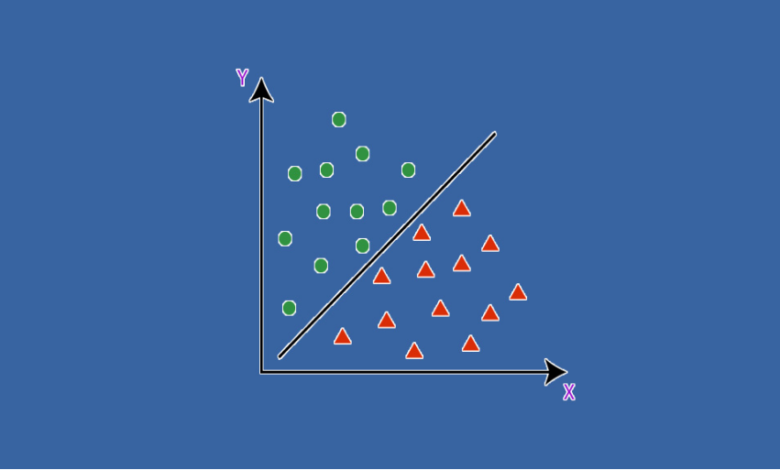Complete guide support vector machine for beginners


In the world of machine learning, support vector machine (SVM) stands out as a powerful and versatile algorithm. It can handle classification and regression tasks with impressive accuracy. This model is designed in a way that works especially for beginners to understand. This article covers the basics of SVM which are much more important. And here the implementation of a support vector machine is discussed in the next section.
What are Support Vector Machines?
A Support Vector Machine is a supervised machine learning algorithm used for both classifications. And very powerful regression tasks. It works by finding a hyperplane that best separates different classes of data in a high-dimensional space. This hyperplane aims to maximize the margin between the two classes, which leads to better generalization to new, unseen data points.
How do Support Vector Machines Work?
- Choosing the Right Hyperplane: In a binary classification problem, where there are two classes to be distinguished, SVM searches for the hyperplane that best separates the data points of these two classes. The optimal hyperplane is the one that maximizes the margin between the classes. The margin is the distance between the hyperplane. And the nearest data points of each class, known as support vectors.
- Dealing with Non-linearity: Real-world data is rarely perfectly linearly separable. In such cases, SVMs employ the (kernel trick). Kernels transform the original feature space into a higher-dimensional space where the classes might become linearly separable. Common kernel functions include Polynomial, Radial Basis Function (RBF), and Sigmoid kernels.
- Handling Outliers: SVMs are robust against outliers due to their focus on support vectors, which are the data points nearest to the decision boundary. These support vectors heavily influence the placement of the hyperplane, making SVMs less sensitive to outliers compared to other algorithms.
- Coping with Multi-Class Classification: While SVMs are inherently binary classifiers, they can be extended to handle multi-class classification problems. One common approach is the “one-vs-all” strategy, where separate SVMs are trained for each class against the rest of the classes. Another approach is the (one-vs-one) strategy, where each pair of classes is classified with its own SVM.
Implementing Support Vector Machines: A Step-by-Step Guide
Step-1: Data Preprocessing
As with any machine learning task, data preprocessing is crucial. Ensure your data is cleaned, normalized, and split into training and testing sets.
Step-2: Selecting the Kernel
Choosing the right kernel depends on the nature of your data. If you suspect your data might be linearly separable after transformation, the RBF kernel is a good starting point. Experiment with different kernels to find the one that yields the best results.
Step-3: Training the SVM
Using a machine learning library (e.g., sci-kit-learn), train the SVM on your training data. Fine-tune hyperparameters like the regularization parameter and kernel parameters to optimize performance.
Step-4: Evaluating the Model:
After training, evaluate your model’s performance on the testing data using metrics like accuracy, precision, recall, and F1-score. This step helps you understand how well your SVM generalizes to new, unseen data.
Step-5: Tuning Hyperparameters
Hyperparameter tuning can significantly affect SVM performance. This allows using techniques such as grid search or random search. Also, can help you find the best combination of hyperparameters for your specific problem. If your classes are unbalanced, handle unbalanced data. This allows one to consider strategies such as using specialized algorithms that are more efficient. Such as – oversampling, undersampling.
Verdict words
Support vector machines may seem complicated at first. But they offer a versatile and powerful tool for a variety of machine-learning tasks. It handles non-linearity, robustness against outliers, and performance in high-dimensional spaces. SVMs have rightly earned their place in the machine learning toolkit. AI could open the door to the benefits of these algorithms for modeling. So will support you as a valuable resource in your journey into the world of machine learning.



